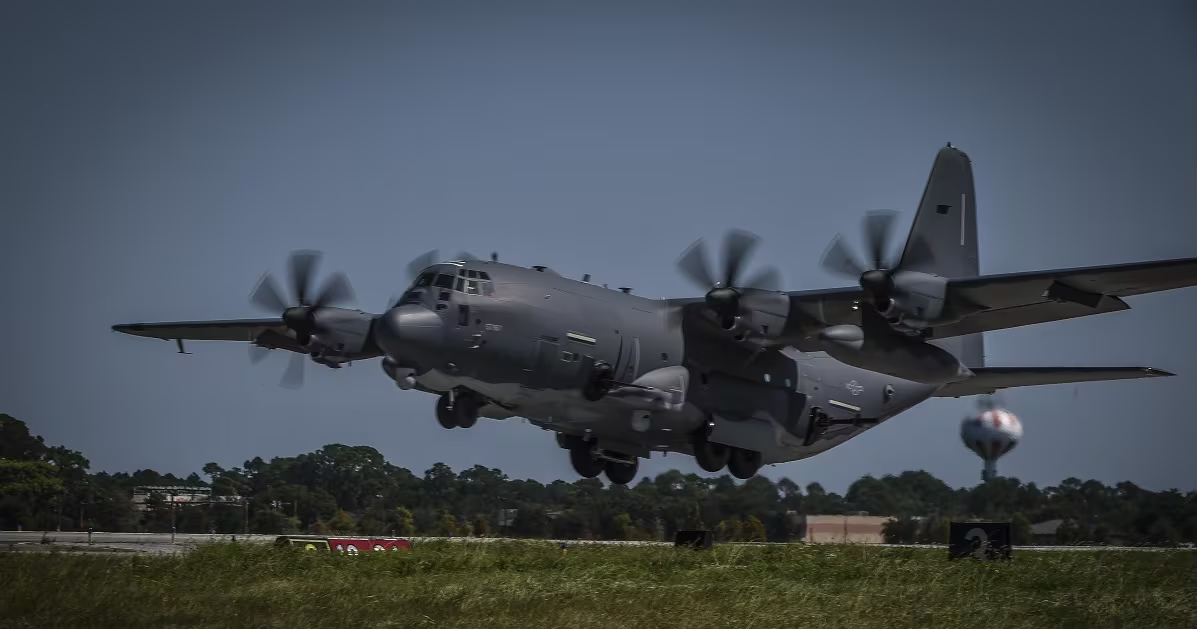WASHINGTON — The U.S. Air Force’s long-planned test of an airborne laser weapon aboard a fighter jet has been delayed until 2023 due to technical challenges and complications spurred by the ongoing coronavirus pandemic, its program head said.
The Air Force’s Self-Protect High Energy Laser Demonstrator program, or SHiELD, had originally planned to conduct its first flight demonstration in 2021, but the test has been pushed two years back, said Jeff Heggemeier, SHiELD program manager for the Air Force Research Laboratory.
“This is a really complex technology to try to integrate into that flight environment, and that’s ultimately what we’re trying to do with this program, is demonstrate that laser technology is mature enough to be able to integrate onto that airborne platform,” he told Defense News in a June 10 interview. “But even things like COVID, and COVID shutting down the economy. That has impacts.”
RELATED

Beyond that, the future of using laser weapons aboard fighter aircraft is even more unclear. The goal of SHiELD was to give combat jets a way to counter missiles shot by an enemy aircraft or by air defense systems on the ground. But in May, Mike Griffin, the Pentagon’s undersecretary of defense for research and engineering, noted that he was “extremely skeptical” that an airborne laser could be used for missile defense.
Asked what that meant for SHiELD, Air Force acquisition czar Will Roper acknowledged that the service is rethinking how it could best use directed-energy technologies. Perhaps the most optimal use for SHiELD wasn’t onboard a fighter, he said.
“What I’ve told that team is, let’s have a dialogue,” Roper said during a June 9 event hosted by the Mitchell Institute for Aerospace Studies. “Let’s understand the different power levels and what they should correspond to, and let’s not make the highest power level that we can dream up and the mission that’s the sexiest be the thing that drives us.”
“What I expect to get laser weapons to the goal line has been the humble, but important and very worrisome small drone threat. They continue to show up, they’re difficult to attribute — we don’t know who is sending them to our installations and tests and things of that nature, and we can’t afford to shoot missiles at them,” he added. “So this is a perfect threat to make laser weapons real, and once they’re real, we’ll do what the military does. We’ll look to scale the power.”
Heggemeier said there are many ways the Air Force could spin off laser technologies developed by the SHiELD program, but it’s critical the service continue with development so it can gauge the maturity and usefulness of the capabilities.
“I think it’s important for us to first remember what the whole point of SHiELD is. The whole point of SHiELD is not an acquisition program where we’re turning out hundreds or tens of these laser systems for operational use. What we’re trying to do with SHiELD is exactly answer those questions of: ‘Is laser technology mature enough to go on an airborne platform? Have we solved enough of those technical challenges that this is now a feasible thing?’ Because there is that concern.”
He also drew a distinction between the tactical, self-defense capability a SHiELD laser would give combat aircraft versus a more powerful laser capable of intercepting highly-advanced ballistic missiles, as the Missile Defense Agency has proposed.
“You’re not talking about these really, really long ranges. You’re talking about a shorter range and different targets just to protect yourself or your wingman,” Heggemeier said. “Missile defense can mean a lot of things. Some of those missile defense missions are very, very hard, and some of them aren’t quite so hard.”
For now, at least, the Air Force’s investment in directed energy remains stable. The service’s budget lays out cash for high-energy lasers in multiple funding lines. For fiscal 2021, it requested $15.1 million for basic research and $45.1 million for applied research for high-energy laser technology, as well as another $13 million for high-power, solid-state laser technology. In FY20, the service received $14.8 million for basic research and $48.2 million for applied research for laser technologies.
SHiELD is comprised of three elements: the laser itself, which is being developed by Lockheed Martin; the beam control system made by Northrop Grumman; and the pod that encases the weapons system, from Boeing. Heggemeier said the pod is under construction, with integration of the laser and beam control system planned to start next year.
“A lot of the challenge is trying to get all of this stuff into this small pod. If you look at other lasers that are fairly mature, we have other laser systems that some other contractors have built that are ready to be deployed. But these are ground-based systems, and they are much, much more mature,” he said.
In April 2019, the Air Force Research Lab conducted a ground test with a surrogate laser system — the Demonstrator Laser Weapon System, or DLWS, now in use by the Army. The demonstration involved the successful downing of several air-to-air missiles.
“It turns out the DLWS system, when you take everything into account, is a really good surrogate for the laser power on SHiELD,” Heggemeier said.
Because both SHiELD and DLWS generate similar amounts of energy on target — in SHiELD’s case, Heggemeier would only say that it amounts to “tens of kilowatts” — the surrogate test gave the lab a good idea how the laser physically affects a target.
In 2019, the team conducted a flight test of a pod with the same outer mold line as the one under development by Boeing. The pod was mounted to an aircraft — Heggemeier declined to specify the model — and flown around Eglin Air Force Base, Florida, to help measure how vibrations, the force of gravity and other environmental factors might influence the performance of the weapon.
Air Force Magazine reported in 2019 that aerial demonstrations of SHiELD would occur onboard an F-15 fighter jet.
Valerie Insinna is Defense News' air warfare reporter. She previously worked the Navy/congressional beats for Defense Daily, which followed almost three years as a staff writer for National Defense Magazine. Prior to that, she worked as an editorial assistant for the Tokyo Shimbun’s Washington bureau.





